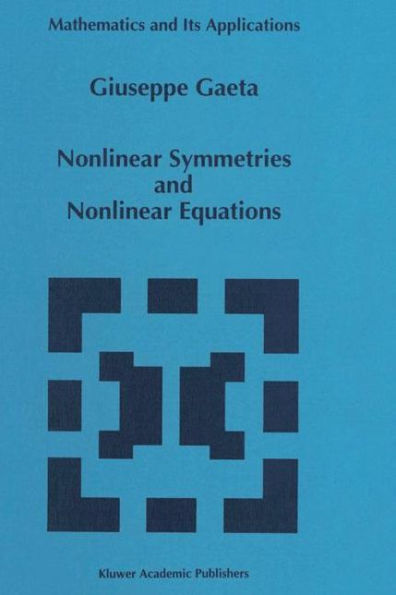The study of (nonlinear) dift"erential equations was S. Lie's motivation when he created what is now known as Lie groups and Lie algebras; nevertheless, although Lie group and algebra theory flourished and was applied to a number of dift"erent physical situations -up to the point that a lot, if not most, of current fundamental elementary particles physics is actually (physical interpretation of) group theory -the application of symmetry methods to dift"erential equations remained a sleeping beauty for many, many years. The main reason for this lies probably in a fact that is quite clear to any beginner in the field. Namely, the formidable comple:rity of the (algebraic, not numerical!) computations involved in Lie method. I think this does not account completely for this oblivion: in other fields of Physics very hard analytical computations have been worked through; anyway, one easily understands that systems of dOlens of coupled PDEs do not seem very attractive, nor a very practical computational tool.
1000991799
Nonlinear Symmetries and Nonlinear Equations
The study of (nonlinear) dift"erential equations was S. Lie's motivation when he created what is now known as Lie groups and Lie algebras; nevertheless, although Lie group and algebra theory flourished and was applied to a number of dift"erent physical situations -up to the point that a lot, if not most, of current fundamental elementary particles physics is actually (physical interpretation of) group theory -the application of symmetry methods to dift"erential equations remained a sleeping beauty for many, many years. The main reason for this lies probably in a fact that is quite clear to any beginner in the field. Namely, the formidable comple:rity of the (algebraic, not numerical!) computations involved in Lie method. I think this does not account completely for this oblivion: in other fields of Physics very hard analytical computations have been worked through; anyway, one easily understands that systems of dOlens of coupled PDEs do not seem very attractive, nor a very practical computational tool.
54.99
In Stock
5
1

Nonlinear Symmetries and Nonlinear Equations
258
Nonlinear Symmetries and Nonlinear Equations
258Paperback(Softcover reprint of the original 1st ed. 1994)
$54.99
54.99
In Stock

Product Details
| ISBN-13: | 9789401044431 |
|---|---|
| Publisher: | Springer Netherlands |
| Publication date: | 10/14/2012 |
| Series: | Mathematics and Its Applications , #299 |
| Edition description: | Softcover reprint of the original 1st ed. 1994 |
| Pages: | 258 |
| Product dimensions: | 6.30(w) x 9.45(h) x 0.02(d) |
From the B&N Reads Blog
